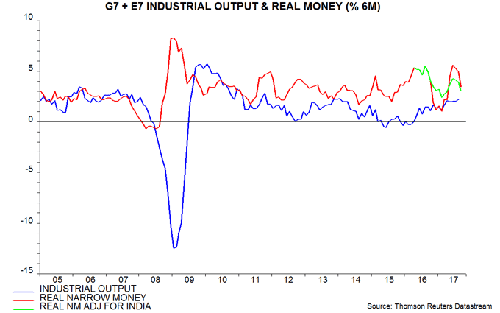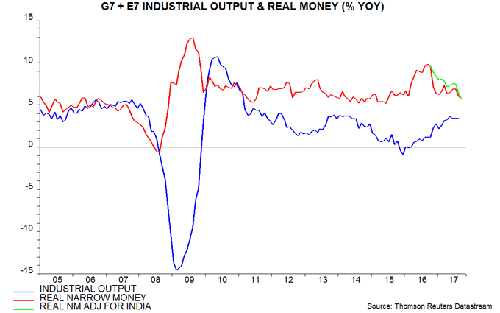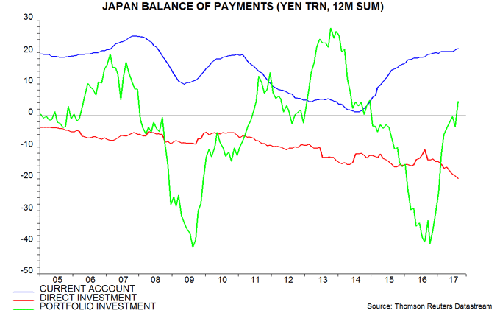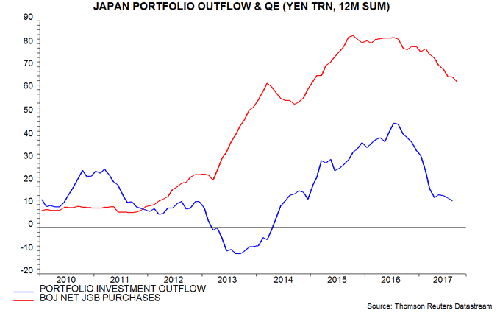
Janus Henderson: Slower economic growth in 2018
The IMF’s latest World Economic Outlook (WEO) – a useful summary guide to the views of the global policy-making consensus – is upbeat about economic prospects.
20.10.2017 | 09:22 Uhr
Monetary trends, by contrast, suggest that GDP growth will slow in 2018. This is the reverse of the position a year ago, when the IMF consensus was gloomy* but money trends were signalling – correctly – that growth would surprise on the upside in 2017.
The IMF now expects its global GDP measure to grow by 3.6% in 2017, up from 3.5% in July. It forecasts a further increase to 3.7% in 2018, implying that growth next year will be the strongest since 2011.
The key forecasting indicator here is six-month growth of global real narrow money**. This appears to have fallen sharply in September, based on monetary data for countries accounting for two-thirds of the aggregate – see first chart. Six-month growth peaked most recently in June. Allowing for a typical nine-month lead, this suggests that the global economy will lose momentum around spring 2018.

The latest decline in six-month real narrow money growth follows a temporary slowdown in late 2016 / early 2017. Together, these have resulted a significant fall in year-over-year real money growth, from a peak of 9.8% in September 2016 to about 6% last month – second chart.

The monetary slowdown, as well as signalling a likely moderation of economic growth in 2018, implies a reduction in current liquidity support for markets. The gap between year-over-year real narrow money growth and industrial output expansion, monitored here as a gauge of the potential money flow into markets, has fallen to its lowest level since 2014 – second chart.
Another development suggesting reduced support for global markets is a sharp slowdown in Japanese portfolio investment overseas. On a 12-month rolling basis, Japan’s portfolio investment balance has swung from a deficit of ¥40.5 trillion or $370 billion in September 2016 to a small surplus in August 2017 – third chart. This mostly reflects a decline in Japanese purchases of foreign securities, which has coincided with a slowdown in QE since the Bank of Japan introduced its "yield curve control" policy – fourth chart.


*The October 2016 WEO was entitled “Subdued demand: symptoms and remedies”.
**”Global” = G7 plus emerging E7. Real = adjusted for consumer price inflation. Narrow money = currency in circulation plus demand deposits or equivalent.



Diesen Beitrag teilen: